Go get ‘em Tiger !!!
“I want to let you know that _______ on Instagram is ripping you off making human animals.” So began an email we received. As one should, we checked out the noted Instagram account and found that yes, indeed, this artist was making animal-headed humans. The sculptures were well done, and clearly their own inspiration.
We responded to the initial email expressing our gratitude for their concern and for alerting us to a potential copyist, but also noted that people have been creating animal-headed humans for thousands of years and that we are far from the first (or last) artists in this era to do so. Their response? “Oh darn. She’s ripping me off too and I hoped you’d go after her.” Hmmmm.
Inspiration and influence vs. copying and pirating – these are big topics for creatives that we should have a certain level of awareness and concern about.
Avast Ye Scurvy Scallywags!
Our personal art is so tied in to our psyche that it can feel as if it is literally who we are (which is why rejection hurts so darn much). It is true that sometimes someone really does rip off our work, such as earlier this year when a company in South Africa was not only purporting to sell counterfeit versions of our work with no accreditation to us as the creators of the originals, but fraudulently took our own images, removed our watermark and used them on their website to advertise the forgeries – really… not cool. There is only one version of these sculptures and they do not live in South Africa. We have no idea what someone who purchased “our sculptures” from their site would have actually received, but the potential for damage to our reputation and livelihood was significant. We sent along a cease and desist, which they did (conveniently, the actual sculptures are owned by two lawyers – that part worked out alright), so fortunately for us, end of story on that one – for now.
But what about this thing of copying someone else’s work? Where’s the line between being inspired by and flat-out pirating?
Imitation – The Sincerest Form of Flattery?
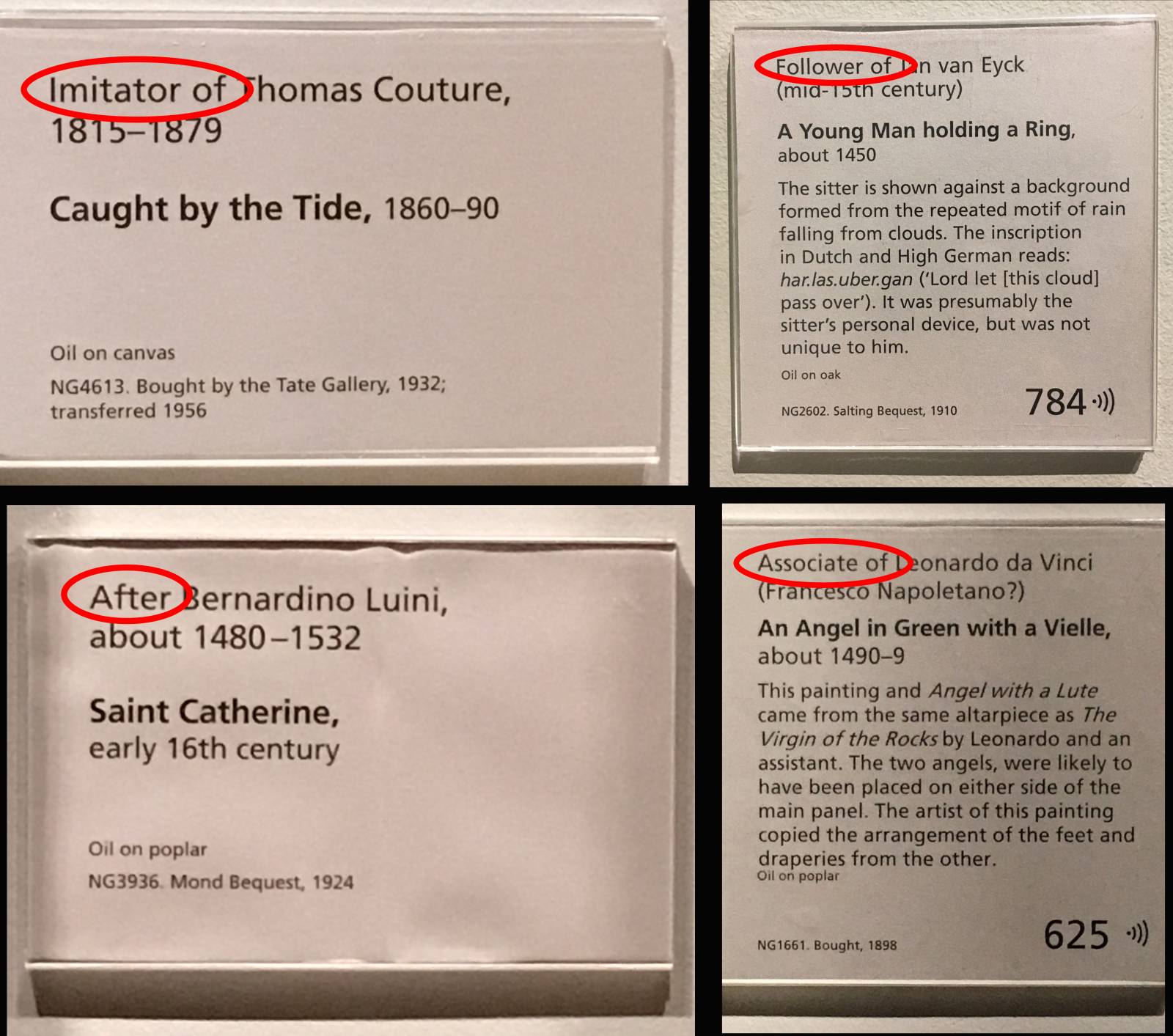
Art History and Pastiche: “Imitator of,” “Associate of,” “Follower of” and “After” – Art history has not been kind to artists who choose to work in the style of the celebrity superstar artist of their day.
The key is to be inspired by, not slavishly imitate (doing “Master copies” as an exercise for learning purposes is different – just don’t enter them in contests or gallery shows). Take some time to figure out what it is about that particular work that makes your mind fly, your heart zing, your breath catch in your throat and then create work that does that in your own way.
Copying a contemporary artist is unscrupulous and creatively bankrupt. There are exceptions, such as obvious parodies, which are created with the knowledge that we will all relate the work back to the original creator’s style. The more iconic an artist’s work is, the less likely you’ll be able to do a spin-off and pass it off as your own work (can we all say “Frazetta” in unison?) Simple thing – don’t do it (to any artist, not just the big names – and this includes photography and works that are in the public domain). Be inspired certainly, but take that inspiration into a new direction and make something that’s truly your own.
Appropriation, fair use and derivative works are entire topics in their own right. But to unpack them at their essentials, I’ll defer to my husband Colin, who says, “Copying another artist’s work denies you the opportunity to find and express your own voice. By your own choice, you silence yourself.” Ouch. Maybe just do your own thing.
That said…
We are all protective of our creative ideas particularly at their inception, and rightly so. However…randomly labeling someone a copyist because their current creation smacks of yours shouldn’t be done recklessly. It is entirely possible for two people to arrive at similar ideas simultaneously. It’s happened so frequently in the field of invention that science actually has a name for it: multiple discovery – inventing or discovering the same thing in two different locations without any contact. Take the telephone: Alexander Graham Bell filed his patent just hours before Elisha Gray.
I was chatting with sculptor Tim Bruckner once and he mentioned he was working on a sculpture of “Eve.” I was like, “No way!! I’m doing a sculpture of Eve right now. How is that even possible?” He told me, “An old friend used to say that the creative conscious is kind of like a giant party line. You can join the conversation anywhere during it. Some of us get in on the conversation early, some late. And some almost at the same time. It seems we’re listening in together – how cool is that?”
Except in the cases of obvious forgeries, I like this idea of artists giving each other the benefit of the doubt. Personally, I tend to be amused by the spin-offs of our work: generally, when the artist has taken it in their own direction and particularly, when they let us know they’re doing it and credit the original sculpture they’ve drawn inspiration from. Some of my favs:
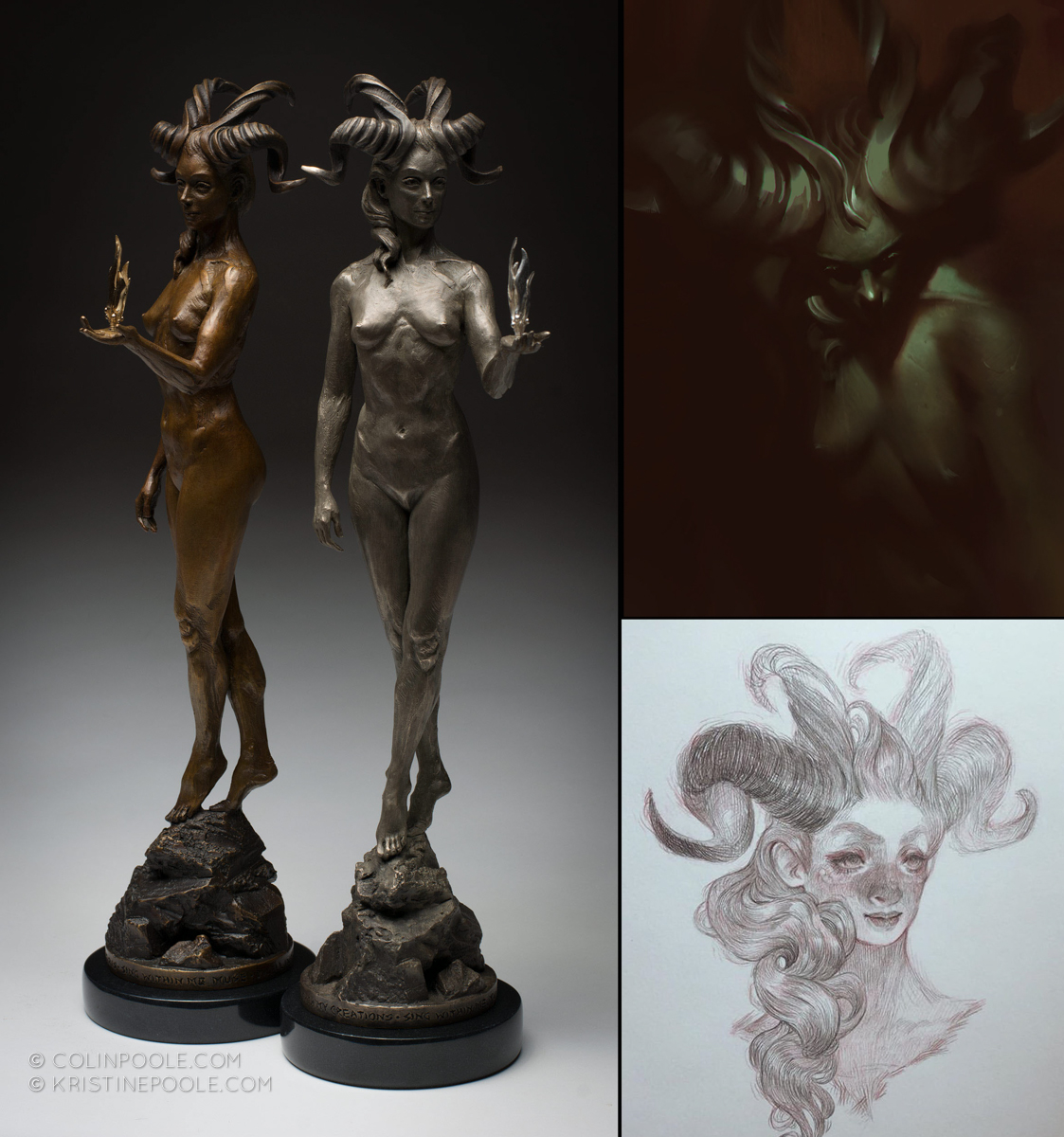
“The Spectrum Muse” was brilliantly riffed on by recipients (top right) Victor Maury and (bottom right) Ki Kline. Seriously…awesome!
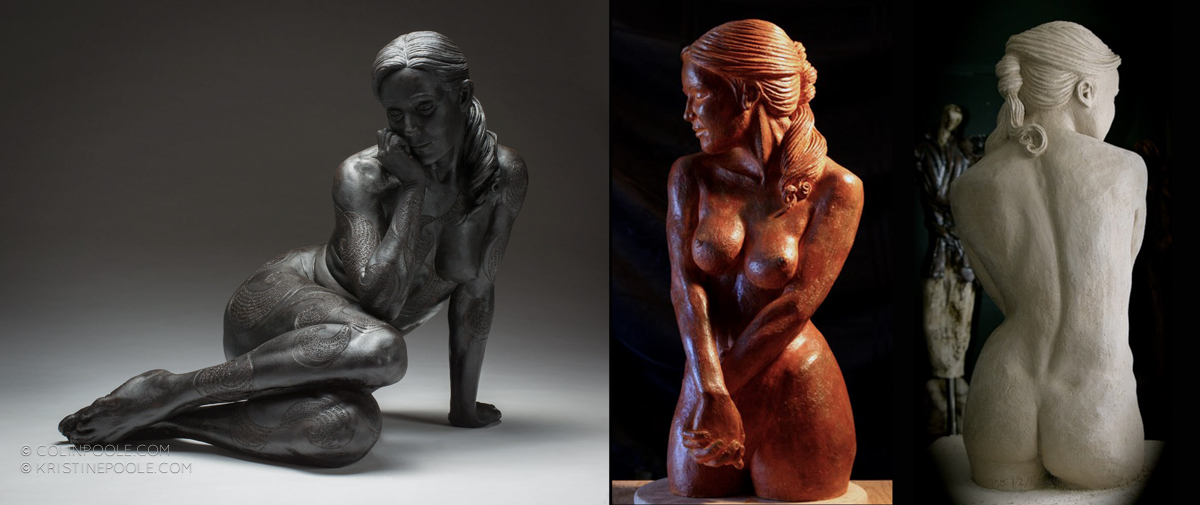
Alain Daignault contacted me with some construction questions and then created the sculpture shown in the right two images. He used “They Said Abigael Was a Witch” (image on left) as inspiration for the hair but took the sculpture completely in his own direction.
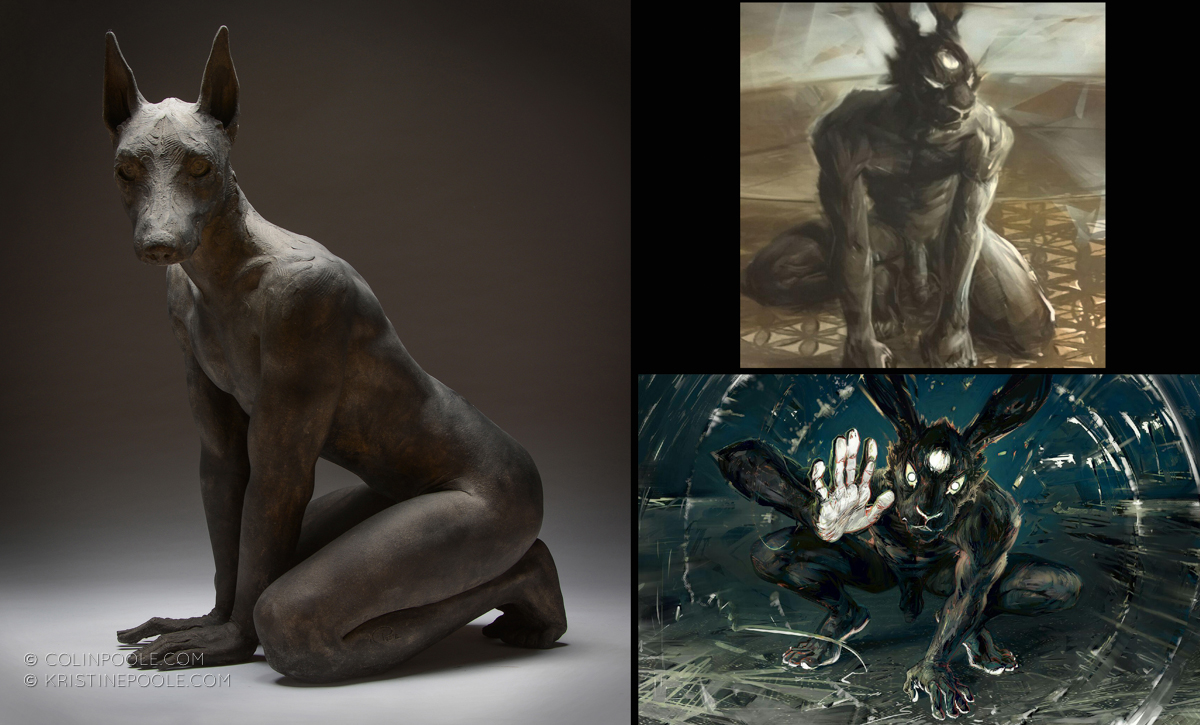
The first time we met Jonathan Vair-Duncan, he told us that an image of our “Hot Diggety Dog” had been on his inspiration board for years. From the inspiration of our dog-man, he created the character shown on the right, which, when I saw it, I was like, “Darn!!! That is so cool – I wish I’d thought of it!” This interaction was the beginning of a friendship that has lasted for years.
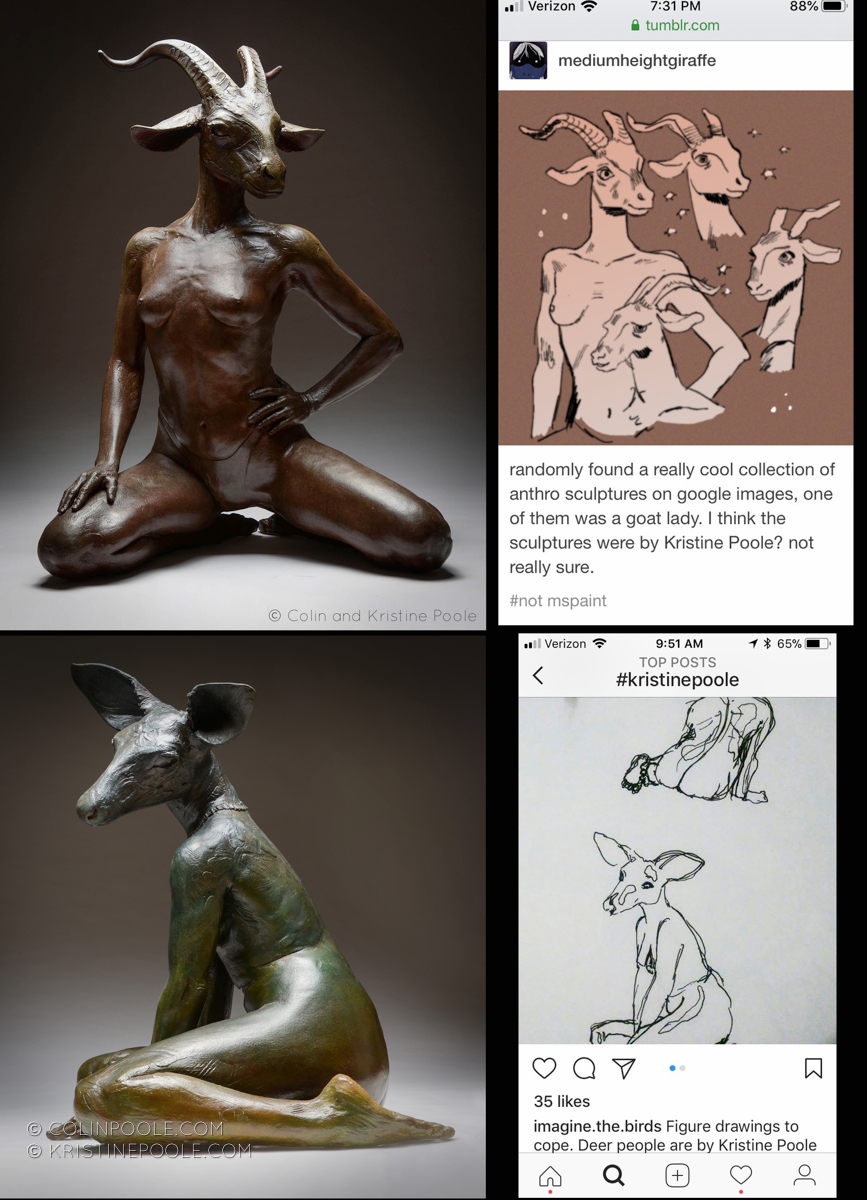
Fauna and Spirit Deer get riffed. I appreciate that even though they didn’t know for sure in the top right image, they made an attempt to credit the source of inspiration. And how can you not love someone doing drawings of your sculptures “to cope”?
My website is filled with information about how I do what I do – my hope is that people would try some of the things. It’s a way I can contribute to the creative community. In the case of someone doing a direct copy of my work, I would hope that I’d have moved on far enough that it wouldn’t make any difference. They’d only be “an imitator of…” in the annals of history – that’s an ignominious ending for any creation.
Mommy, where do sculptures come from?
We are all affected by what’s around us – there’s a plethora of visual information continually bombarding us. People ask artists all the time, “where do you get your ideas?” Fair enough. For us, the answer is everywhere – we are inspired by and learn from just about everything we see, read, hear, think and talk about.
One of our favorite things is traveling to museums and studying historical artworks. We were literally stopped in our tracks by Carrier-Belleuse’s “Mary, Queen of Scots,” a terra cotta portrait bust. I’d been embellishing sculptures since high school, but this brought adornment to a whole new stratosphere. I’d wanted to sculpt faces without going into traditional portraiture and this direction tied in perfectly with our established concepts and interests.

Carrier-Belleuse: “Mary, Queen of Scots.” Portrait busts are often placed up against a wall, maybe partly for safety, but also the backside is usually an unattractive and unfortunate “dead area” on the sculpture. I want to see every side of a sculpture, so find this practice frustrating. On the plus side, we saw an opportunity to use the back area as an additional canvas to further the story of our sculpture.
When we got back to our studio, I started my own bust. Inspired by the ornamentation in the armories we’d visited, Colin then created the relief motifs on her front and back. In combining our vision with things that had inspired us, “Ktisis: Muse of Creativity” came into being.
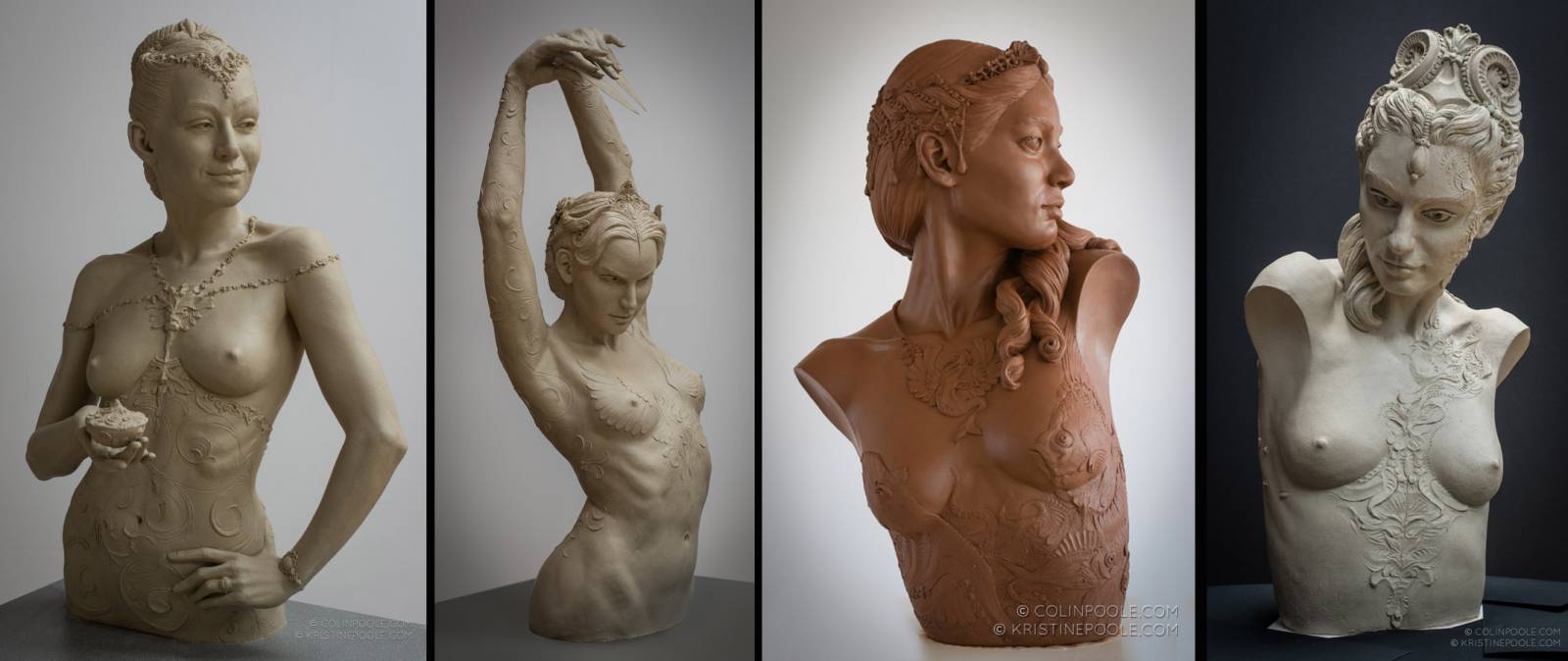
“Ktisis” opened a whole new door in our creative output, leading to a series of muses, representing various ways concepts come to us. From left: “Ki An: Muse of Curiosity”, “Despoena: Muse of Challenges”, “Oneira: Muse of Dreams”, “Koketa: Flirtation of the Muse”
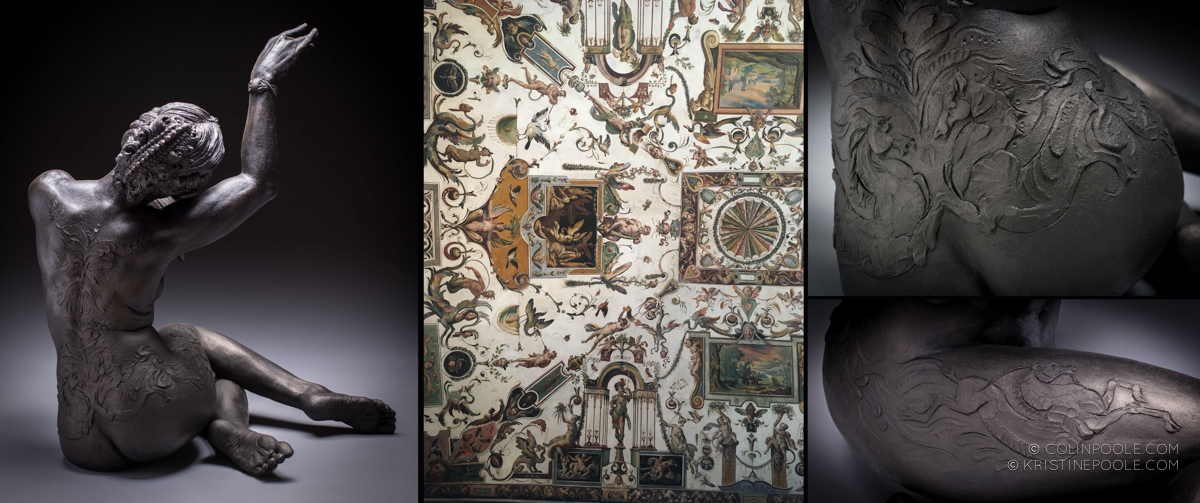
For the motifs on “Musique: Muse of Music,” Colin looked to the fabulous creatures on the ceiling of The Uffizi for inspiration.
We can be influenced by a conceptual direction as well. My first time in Florence, I saw Giambologna’s “Rape of the Sabine Women.” I spent hours studying the spiraling glory of it – there is no “flat side” to this sculpture. Many years later, we came across Ron Mueck’s sculpture “Young Couple.” The viewer’s impression from the front is completely altered when you see the back.
These sculptures capitalize on the uniqueness of dimensional works – in which the story can change or be amplified as you move around it. We decide to create a sculpture that to get the full story, it must be viewed from all sides. This led to the “Spinner of Dreams,” which also takes us to our final topic:

From the front view, she appears to be simply a young woman spinning an elaborate and delicate object, with elements of nature woven into her headdress – small antlers and our version of an ancient triple moon symbol, hearkening to nighttime and dreams. As you move around the sculpture, the hidden features emerge and the full narrative reveals itself. First, you notice a small bassarisk-like animal on her lap, its body curving around her hip. Moving further, you see that the creature’s tail wraps into her side and then blends completely into her back. Further around, her hair turns into a bird that together with a lizard, emerges from and blends into her body. Following the lines, you see that she herself along with these creatures-perhaps the seemingly impossible aspects of them like the color of laughter, the feel of a bird’s song, the whisper of a cat and the warmth of a lizard- are what is being spun into stories. In a sense, she is creating herself as she spins her dreams.
H*Art to H*Art Chat
The list of artists selected for inclusion in Spectrum 27 comes out today. It’s always a bittersweet moment – to celebrate with those who made it and commiserate with those who didn’t. And then, there are always the internal voices to deal with.
Last week, Craig Elliott, one of this year’s judges, commented on the Shiflett sculpting forum, “Oh and by the way, the sculpture entries in this year’s Spectrum were incredible. Congrats to those who entered. Whoa!!!” My immediate reaction: “Shoot. Well, there’s always next year.” My internal voice immediately excluded my work.
My second reaction came a moment later when I thought, “Well, the opportunity here is that I get another chance to do better than I have in the past celebrating with those whose work appealed to the judges, to be genuinely happy and proud of my friends’ work” – what a better way to spend the next few weeks than wallowing in disappointment.
Come to find out, one of our sculptures, “The Spinner of Dreams,” not only made it in, but was nominated in Dimensional. Often times, our internal critic is daft.
Having been on both sides of judging, we know how hard it is to make the selections. We know the joy of being included and the heart sting of not getting in. We’ve all heard stories of work being rejected from one contest only to become an award winner in another. The bottom line is this: whether this time you find your art in or out, know that your voice matters. Your work is important. You are the only one who can bring your unique vision into being and it enlivens us all every time you do.


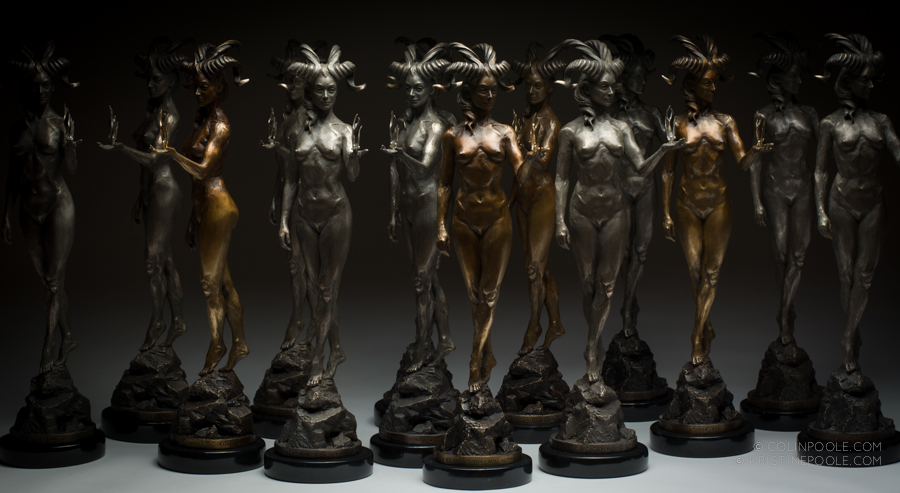
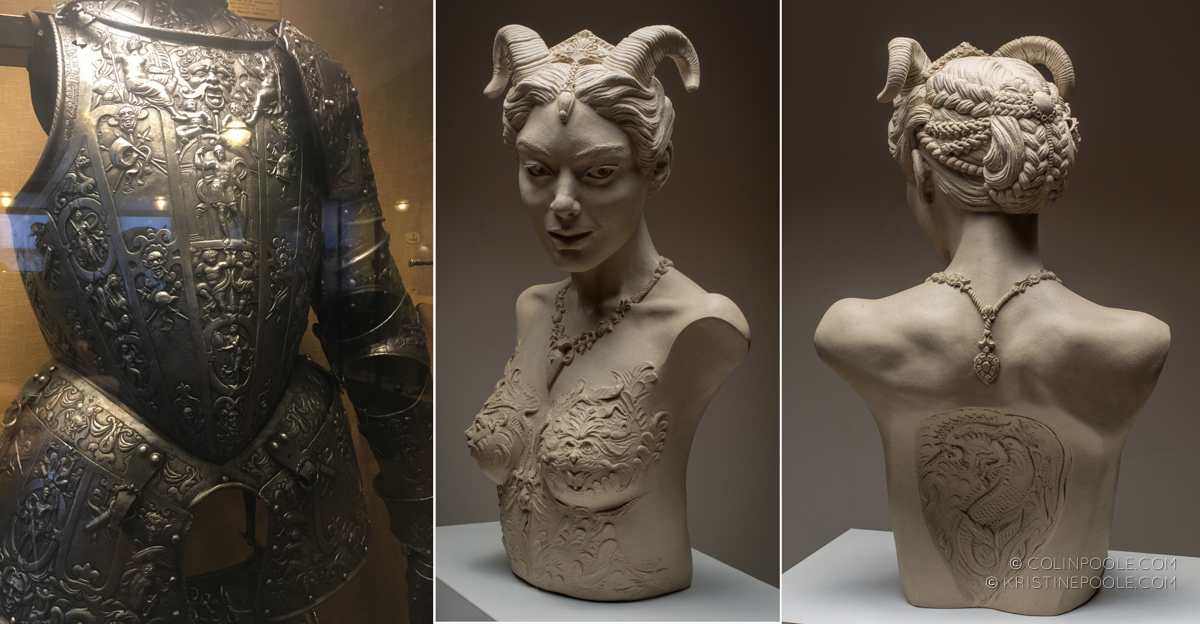
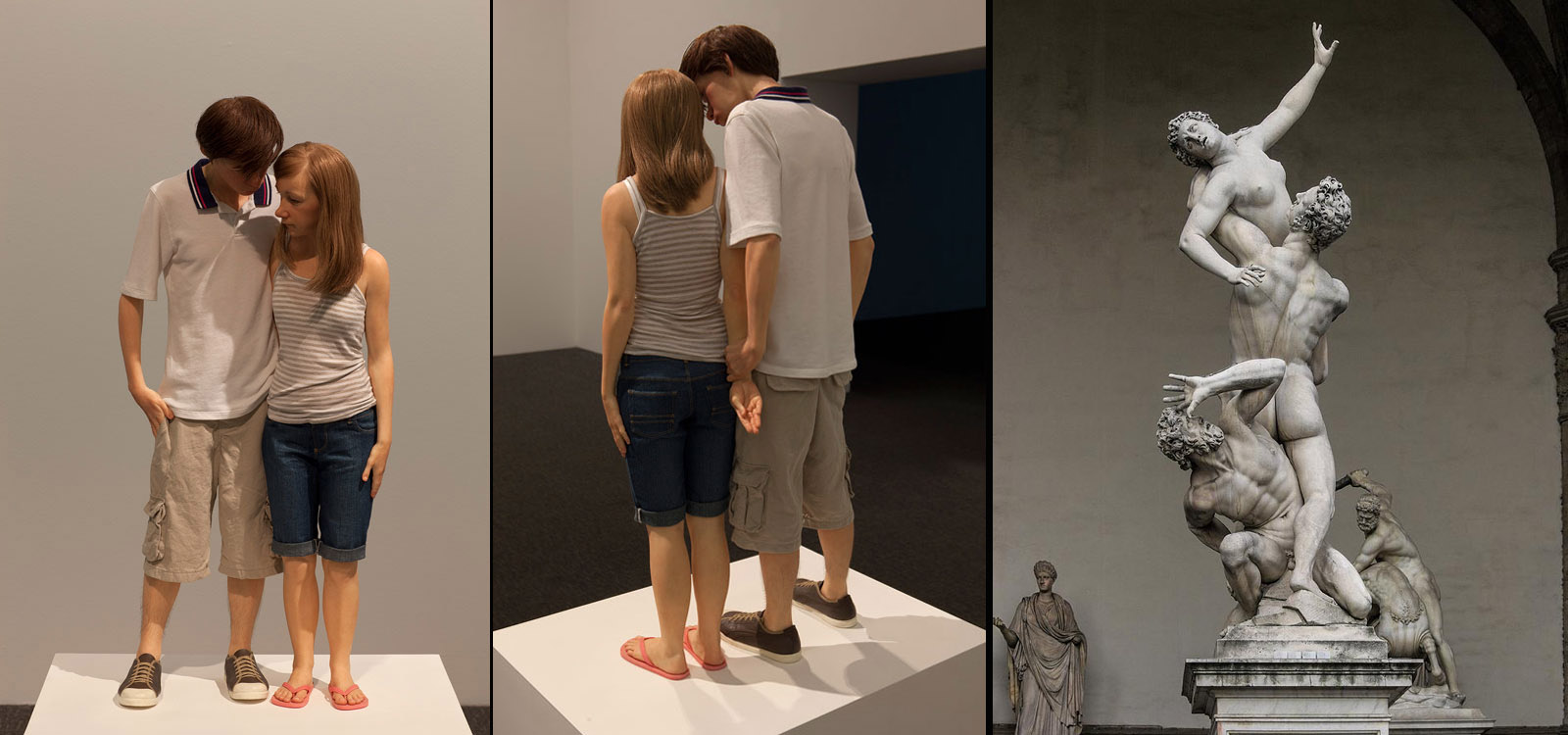

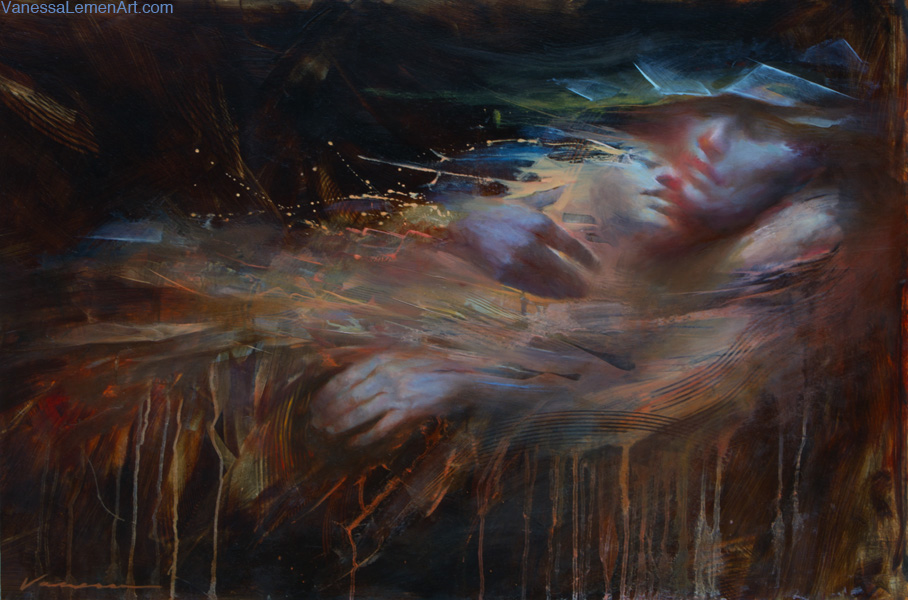
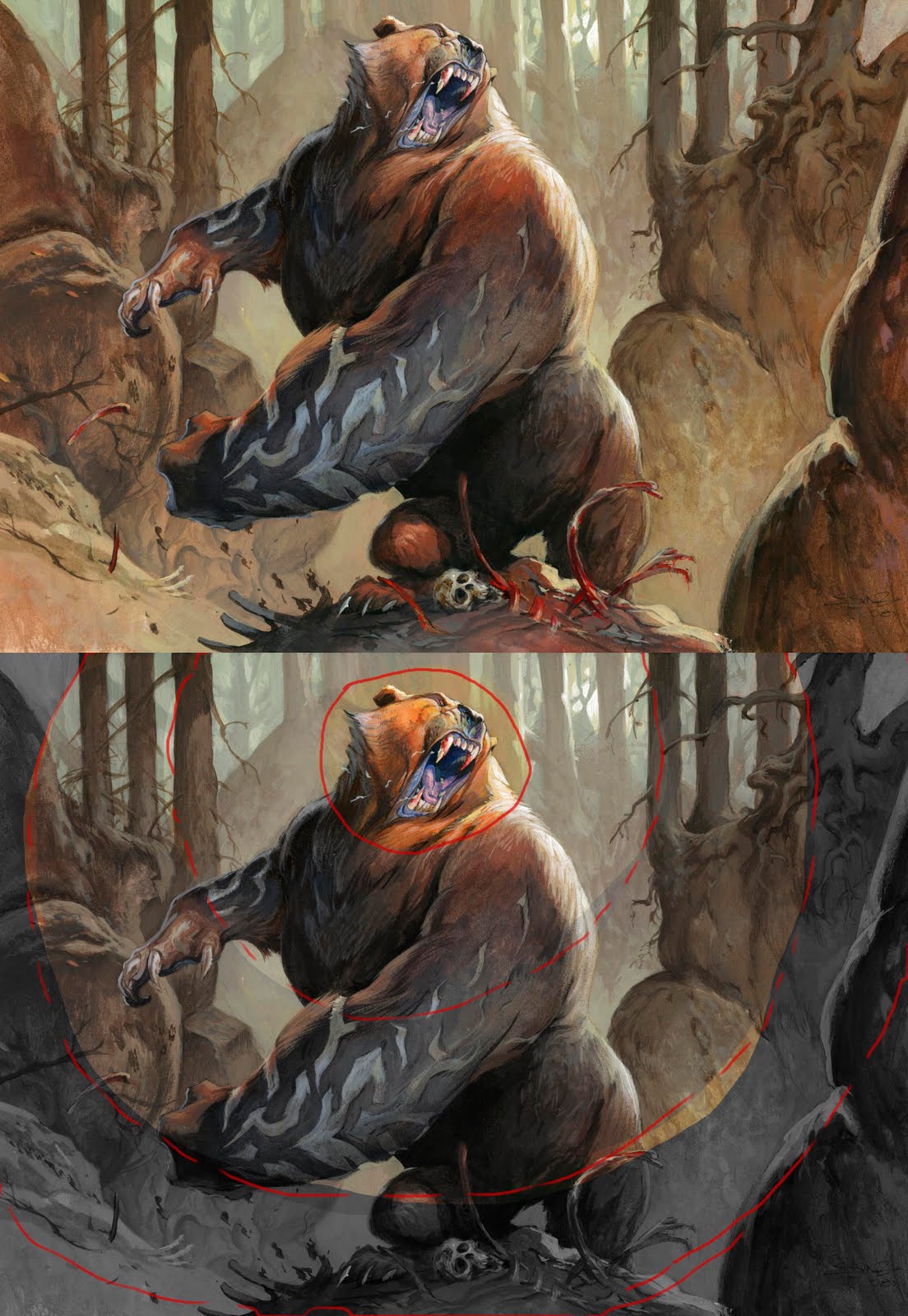
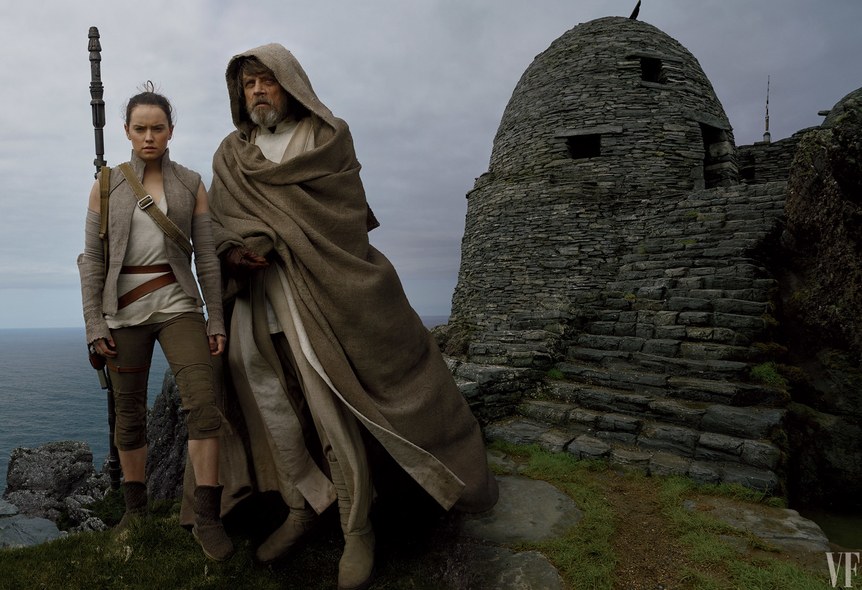


Recent Comments